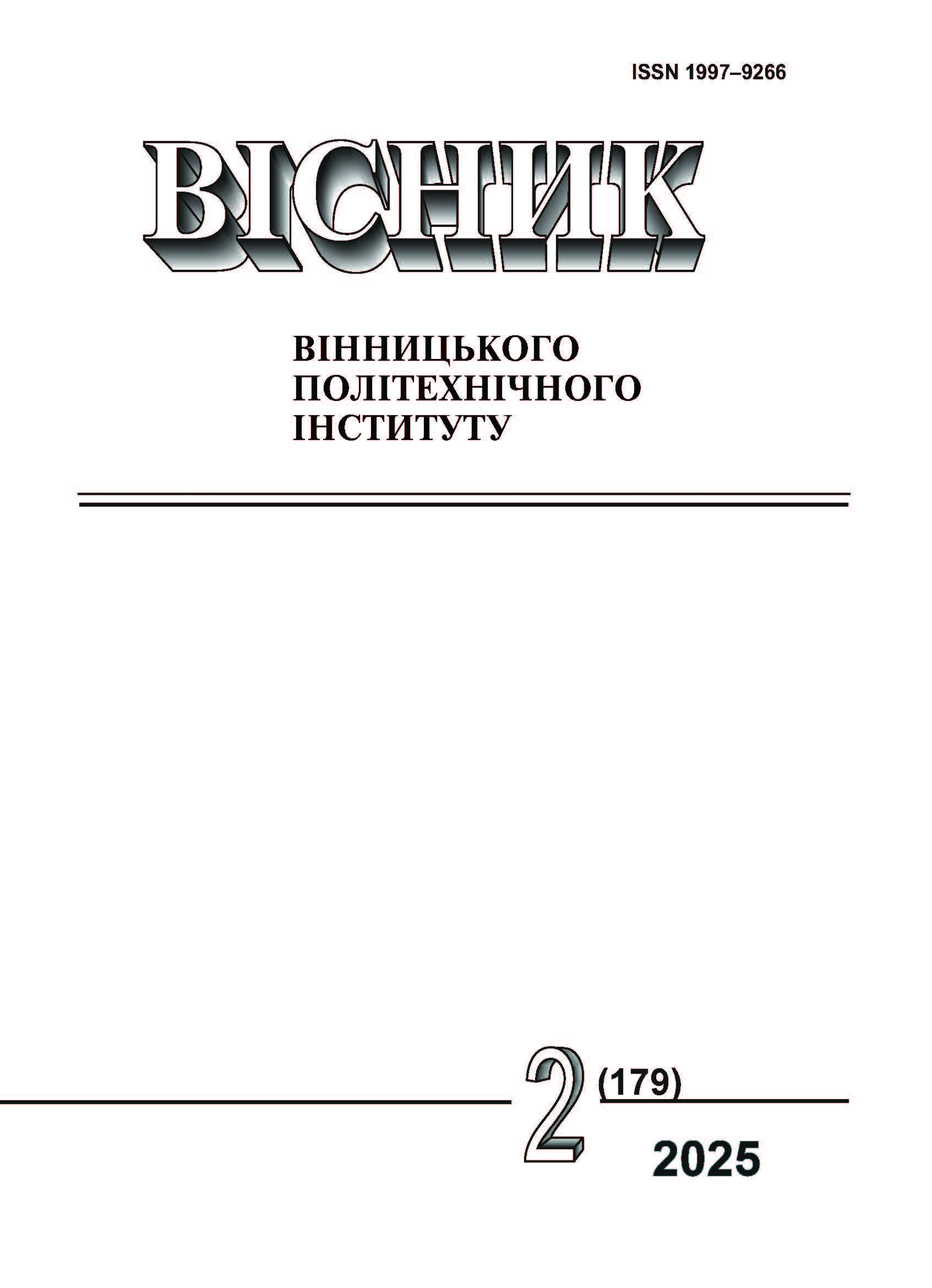System Analysis of the Geoecological State of Urban Soils in the City of Cherkasy
DOI:
https://doi.org/10.31649/1997-9266-2025-179-2-45-52Keywords:
urbosoils, humus content, acid-base properties, redox potential, salinity, cartographic modelingAbstract
The results of a comprehensive analysis of the geoecological state of urban soils in the city of Cherkasy are presented, along with an assessment of their degree of transformation and their capacity to provide ecosystem services. Using the SURFER software package, a cartographic zoning of the city area was conducted based on the physicochemical properties of the soils. It is demonstrated that the soils are predominantly poor in organic matter, which creates unfavorable conditions for plant growth and diminishes their ability to adsorb heavy metals. Based on the pH values of the water, the soils are characterized as homogeneous (with a coefficient of variation of 9 %), predominantly alkaline, which hinders their role in supplying plants with essential macro- and micronutrients. 63 % of the studied soils can only partially perform the adsorption function, while 44 % are capable of performing the sanitation function. According to their acid-base buffering capacity, the soil ecosystems of the city mainly operate in a relatively ecologically stable mode. Regarding the content of toxic salts, nearly 30 % of the soils are non-saline, 36 % are weakly saline, 23 % are moderately saline, and 10 % exhibit high salinity levels. The primary contributors to the overall salinity of the soils are chloride ions and bicarbonates. The redox potential of the soils ranges from 184 to 287 mV, with an average value of 239 mV. At these redox potential values and a pH ≥ 8.0, denitrification processes are likely to dominate in the soil, and plants may experience deficiencies in Fe and Mn. The developed databases and cartographic models of the physicochemical properties of urban soils enable the analysis of their transformation over time and space in relation to anthropogenic influences, the detection of significant changes, the identification of areas prone to hazardous exogenous processes and ecologically geochemically unstable ecosystems, and the formulation of effective environmental protection measures.
References
D. G. Rossiter, “Classification of Urban and Industrial Soils in the World Reference Base for Soil Resources, “Journal of Soils and Sediments, no. 7, pp. 96-100, 2007.
W. Burghardt, Urbanen Bodenschutz. Berlin, German, 1996, 244 p.
А. І. Хохрякова, «Антропогенні глибоко-трансформовані ґрунти (урбоземи) міста Одеси,» Агроекологічний журнал, № 3, с. 110-117, 2020. https://doi.org/10.33730/2077-4893.3.2020.211535 .
Ю. М. Дмитрук, «Елементний склад урбоґрунтів селітебних ландшафтів (на прикладі м. Чернівці),» Наукові записки Вінницького педуніверситету, Сер. Географія. № 21, c. 290-297, 2010.
О. Г. Луцишин та ін., «Фізико-хімічні властивості ґрунтів в умовах Київського мегаполісу,» Доповіді Національної академії наук України, № 3, с. 197-204, 2011.
Я. В. Геник та ін., «Зміни фізико-хімічних властивостей ґрунтів лісопаркових і паркових насаджень міст внаслідок рекреаційних навантажень,» Науковий вісник НЛУ України, № 24 (10), с. 66-71, 2014.
C. Calzolari et al., “Ungaro, Assessing soil ecosystem services in urban and peri-urban areas: From urban soils survey to providing support tool for urban planning,” Land Use Policy, vol. 99, pp. 105037, 2020. https://doi.org/10.1016/j.landusepol.2020.105037 .
Інвестиційний паспорт міста Черкаси. [Електронний ресурс]. Режим доступу: https://chmr.gov.ua/upload/INVESTYCIJNYJ_PASPORT.pdf . Дата звернення 17.03.2025.
Н. М. Корнелюк та ін., «Еколого-геохімічна оцінка забруднення ґрунтів м. Черкаси важкими металами,» Екологічна безпека, № 2 (28), с. 44-51, 2019. https://doi.org/10.30929/2073-5057.2019.2.44-51 .
О. О. Мислюк та ін., «Екологічна оцінка кислотно-основних властивостей урбоземів м. Черкаси,» Вісник КрНУ імені Михайла Остроградського, вип. 4 (117), с. 53-59, 2019. https://doi.org/10.30929/1995-0519.2019.4.53-59 .
П. П. Надточій, Т. М. Мислив, і Ф. В. Вольвач, Екологія ґрунту, Житомир, Україна: вид-во П. П. Рута, 2010.
O. Mislyuk, et al., “Assessing risk caused by atmospheric air pollution from motor vehicles to the health of population in urbanized areas,” Eastern-European Journal of Enterprise Technologies, vol. 1, no. 10 (121), Ecology, pp. 19-26, 2023. https://doi.org/10.15587/1729-4061.2023.274174 .
А. І. Хохрякова та ін., «Оцінка рівня хімічного забруднення ґрунтів паркових зон міста Одеси,» Науковий вісник Херсонського державного університету, серія: Географічні науки, вип. 6, с. 164-172, 2017.
Mashal, Kholoud et al., “Spatial variations of urban soil salinity and related ions in arid and semiarid areas,” Arabian Journal of Geosciences, vol. 15, 2022. https://doi.org/10.1007/s12517-022-10540-5 .
З. Г. Гамкало, «Екологічна інформативність окисно-відновного потенціалу ґрунту агрофітоценозів,» Наукові записки Вінницького державного педагогічного університету, серія: Географія, вип. 3, с. 82-89, 2002.
В. І. Тригуб та ін., «Ґрунтово-екологічні особливості міських ґрунтів (на прикладі м. Одеси),» Вісник Одеського національного університету, серія: Географічні та геологічні науки, т. 21, вип. 1, с. 98-109, 2016.
Downloads
-
pdf (Українська)
Downloads: 43
Published
How to Cite
Issue
Section
License

This work is licensed under a Creative Commons Attribution 4.0 International License.
Authors who publish with this journal agree to the following terms:
- Authors retain copyright and grant the journal right of first publication.
- Authors are able to enter into separate, additional contractual arrangements for the non-exclusive distribution of the journal's published version of the work (e.g., post it to an institutional repository or publish it in a book), with an acknowledgment of its initial publication in this journal.
- Authors are permitted and encouraged to post their work online (e.g., in institutional repositories or on their website) prior to and during the submission process, as it can lead to productive exchanges, as well as earlier and greater citation of published work (See The Effect of Open Access).





